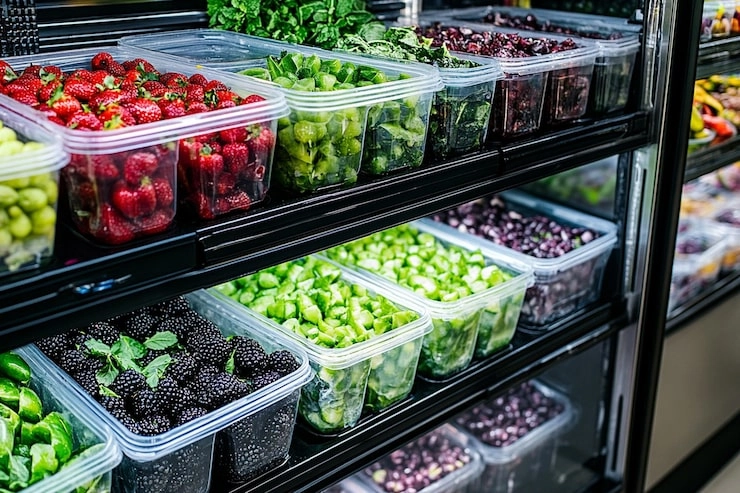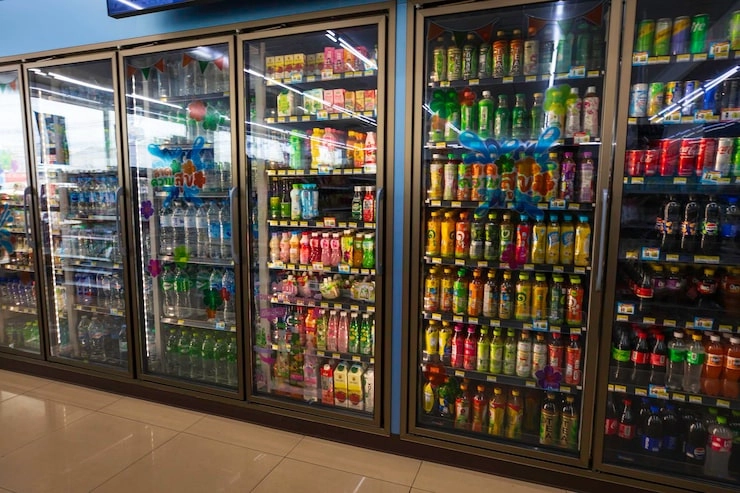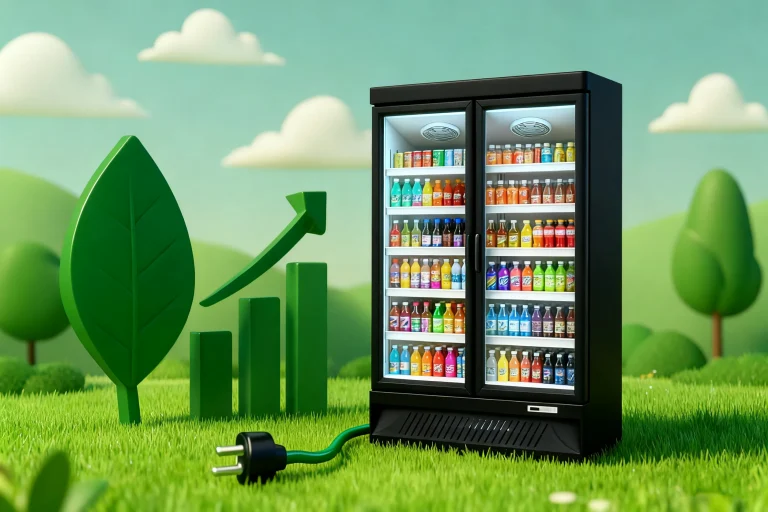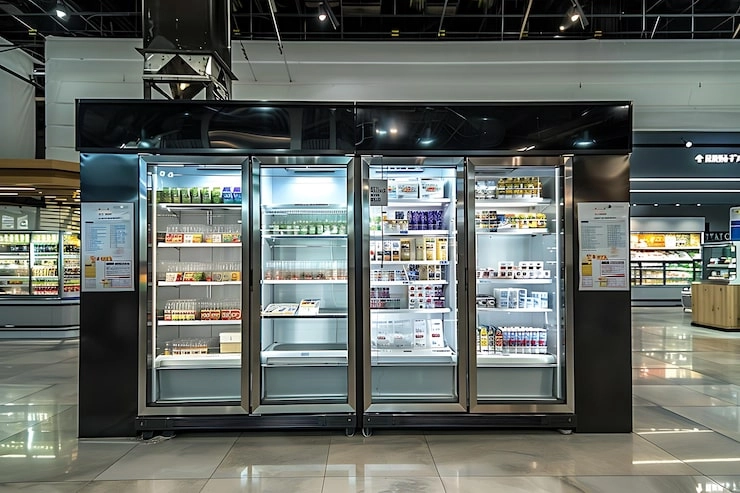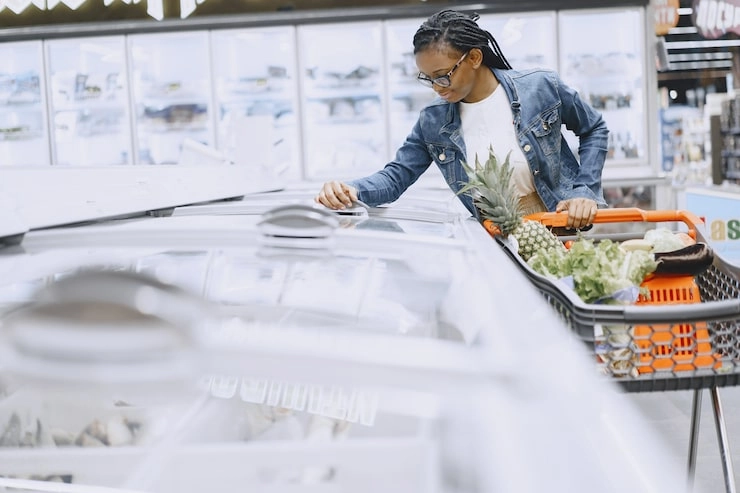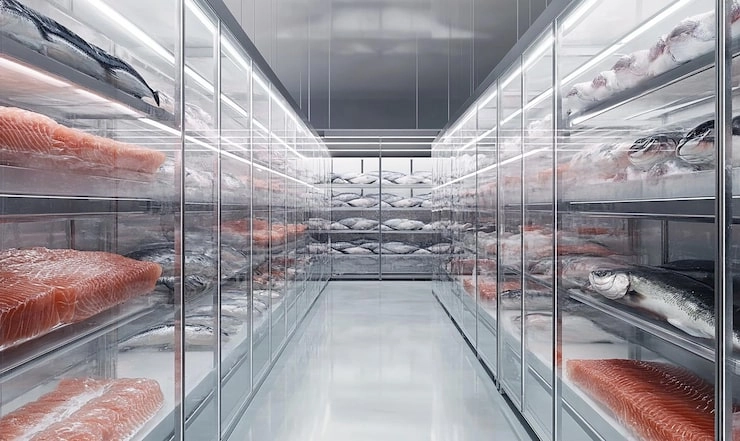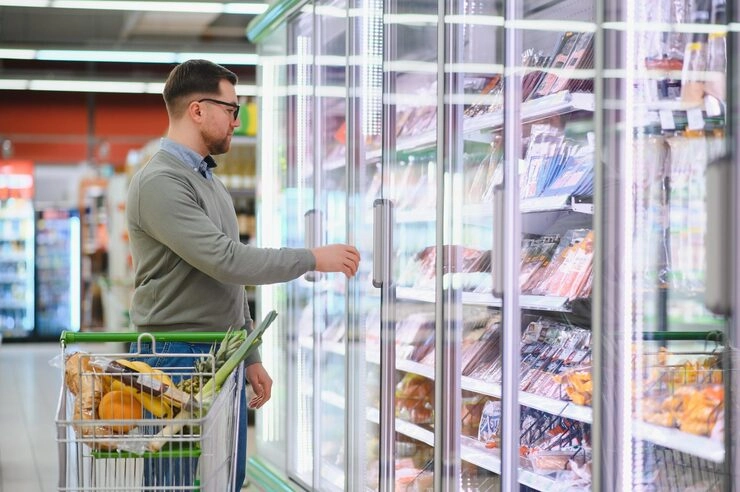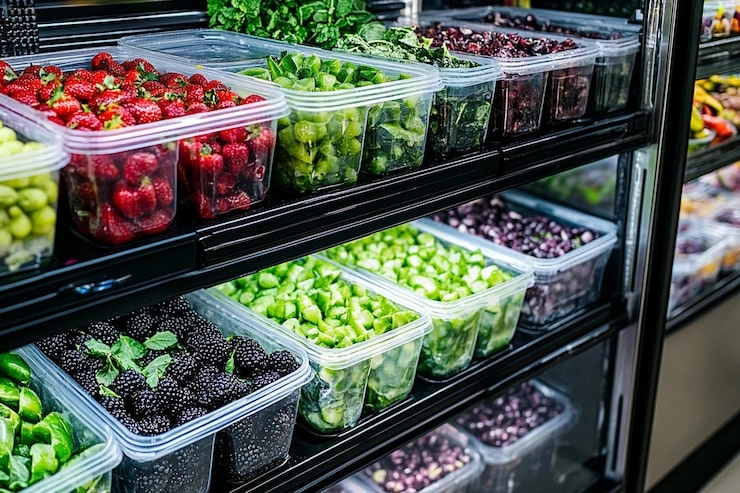
Outside weather and room temperatures can greatly affect how well a fruit and veg display chiller works. This impacts both the crispness of your fresh items and your power bills. Hot air outside makes the cooling system strain more. As a result, it uses extra energy. Plus, there’s a bigger chance of breakdowns. Yet, smart tips can keep your fruits and veggies looking great. They stay appealing no matter the conditions.
This handy guide covers key ways to boost the life and appeal of items in your fruit and veg display chiller. You’ll learn simple steps. These help handle tough weather without worry.
Temperature and Humidity: The Cornerstones of Freshness
A fruit and veg display chiller mainly slows down how fast produce breathes and grows. That cuts down on rot. Getting the right mix of chill and dampness matters a lot. Without it, things go bad quicker.
Optimal Temperature Ranges
The usual sweet spot for a fruit and veg display chiller sits from 2°C to 10°C (35.6°F to 50°F). But always match it to what you’re storing. Different plants need different chills. Ignore that, and you’ll see damage.
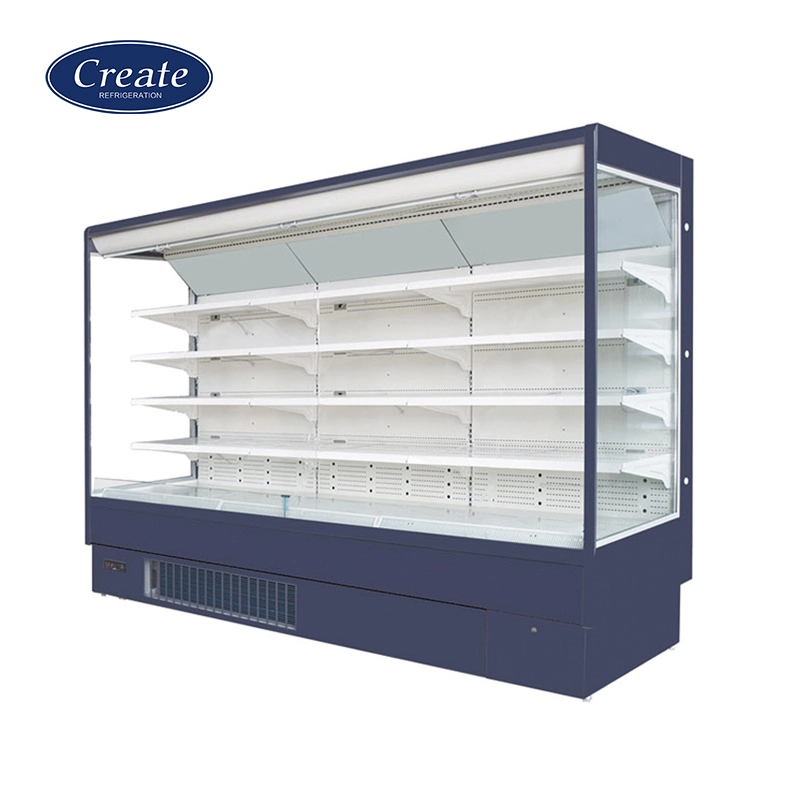
Cool-season greens and veggies love the cold. They do best around 2°C to 7°C (36°F to 45°F). Think lettuce or spinach. They stay perky there.
Tropical fruits hate too much chill, though. Bananas and mangoes can get hurt by low temps. This leads to spots and quick decay. So, keep them warmer. Some, like bananas, skip the fridge altogether. That’s key.
For mixed loads in your fruit and veg display chiller, aim for 4°C to 6°C (39.2°F to 42.8°F). It’s a safe bet. This range suits most. What’s more, it avoids shocks to sensitive types.
Humidity Control
Keep dampness high, at 85-95%. That stops drying out. Produce wilts fast without it. Many units have built-in misters. Great. If yours lacks one, add an outside helper. Or try other tricks to hold moisture steady.
Best Practices for Long-Lasting Freshness in Your Fruit and Veg Display Chiller
Temperature and humidity set the base. But extra habits stretch shelf time even further. These simple routines make a big difference. They keep things vibrant longer.
Pre-Cool the Chiller
Chill the unit first. Do this before loading up your fruit and veg display chiller. It avoids wild swings that tire out the goods. Steady starts mean better ends. Thus, spoilage drops.
Proper Storage Techniques
Smart packing rules save the day.
Avoid Overpacking
Don’t cram it full. Air needs room to move. Overstuffing traps heat in spots. Produce suffers there. Leave gaps. Circulation wins.
Packaging
Fresh wraps help lock in wet. Use new bags for groups. For juicy fruits, paper inside holes-in-plastic works wonders. It balances damp. No more shrivel.
Separate Fruits and Vegetables
Fruits give off ethylene gas. This speeds up veggie rot. Bad news. Split them apart in your fruit and veg display chiller. One side fruits. The other veggies. Simple fix. Huge payoff.
Produce-Specific Handling
Each type has quirks. Handle right, and they last.
Post-Harvest Resting Period
Fresh-picked stuff benefits from a warm pause. Let it sit a day at room temp. Enzymes zap leftover sprays. Then, into the chill. Cleaner results.
Ripening
Let peaches soften outside first. Once ripe, fridge them. This prevents mush. Or worse, early end.
Regular Maintenance and Cleaning
Clean often. It stops germ spread. Mold loves dirt. Check seals and fans too. Fix issues quick. A smooth fruit and veg display chiller runs cool. And cheap.
The Impact of Airflow and Ventilation on Produce Quality
Chill and wet are big. But air flow matters just as much. Many skip it. Don’t. Good circulation evens out the cold. No hot or icy patches ruin batches.
Overload the shelves. Push against back vents. Airflow breaks. Cooling fails. Spoilage speeds up. Besides, vents clear ethylene. Fruits like apples pump it out. Veggies nearby—broccoli, greens, roots—wilt fast without escape routes.
Newer fruit and veg display chiller models shine here. They use layered air walls. Plus, thrift fans. All this builds a steady bubble. Produce thrives inside. Energy stays low too.
First of all, check your setup. Is air free? Adjust. So that every corner chills even. Your stock thanks you.
Partnering with Refrigeration Experts
Stores want top fresh holds. Pair with pros. They tailor fixes. Take Shandong Create Refrigeration Co., Ltd. They’re a full-shop spot for shops and big builds. They stock commercial supermarket refrigeration equipment, walk-in coolers, and supermarket shelves.
Create Refrigeration eyes world cold chains. They mix design, making, and fresh ideas. All for client fits. Global reach. Plus, extras like CAD matches. Or 3D views. See your space live. Decide smart.
What’s more, their touch cuts waste. Boosts sales. Fresh looks draw crowds.
Conclusion
Use these tips well. From spot-on chill and damp tweaks to smart packs and clean routines. Your fruit and veg display chiller turns perfect. Items stay bright. Lively. Shoppers love it. Weather? No sweat.
Team with refrigeration pros. Gain edge. Tap new tech. Efficiency soars. Fresh wins every time.
Frequently Asked Questions (FAQ)
Q1. What is the most common mistake people make with their fruit and veg display chiller?
A: Overpacking tops the list. It blocks air paths. Temps go wild. Hot zones form. Goods rot fast. Space out items. Let breeze through. Problem solved.
Q2. How can I naturally maintain high humidity in my display chiller without a built-in humidifier?
A: Try water trays at the base. They bump up the air’s wet. Mist greens lightly daily too. But easy does it. Too much invites mold on some. Balance is key.
Q3. Why do some vegetables wilt in the chiller even at the right temperature?
A: It’s often dry air. Not the chill. Right temp helps. Low damp hurts leaves most. Hit 85-95% humidity. Use bags with holes. Or drawers. They trap wet. Veggies perk up.

